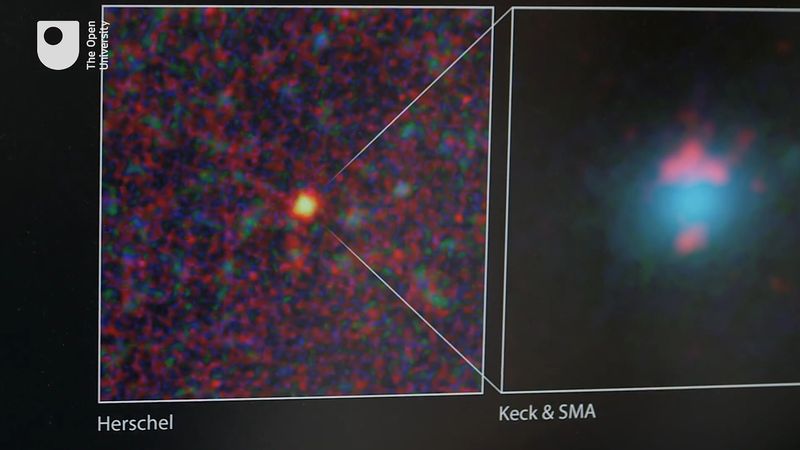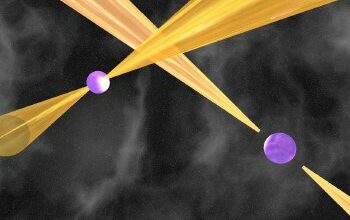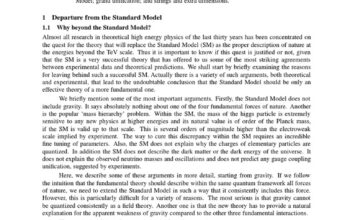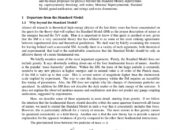When one gazes into the vastness of the cosmos, twinkling stars and swirling galaxies paint a picture that is deceptively serene. Yet, beneath this celestial façade lies an enigma that has perplexed astrophysicists for decades: dark matter. The term evokes a conundrum: how can something that cannot be seen exert such a profound influence on the universe? What was the first sighting of dark matter, and how did it challenge our understanding of fundamental physics?
The origins of the concept of dark matter can be traced back to the early 20th century, when astronomers began to scrutinize the rotational dynamics of galaxies. The work of Fritz Zwicky in the 1930s is particularly pivotal. While investigating the Coma Cluster, Zwicky calculated the mass of visible matter by observing the galaxies within the cluster and their velocities. His findings indicated that the mass attributed to the observed galaxies was insufficient to account for the gravitational binding required to hold the cluster together. Remarkably, he inferred the existence of a vast amount of unseen mass, coining the term “dunkle Materie,” or dark matter, to describe it. Was he merely a maverick, or did he tap into a profound truth hidden within the universe?
This groundbreaking revelation opened the proverbial Pandora’s box of astrophysical inquiry. If so much matter was absent from our observations, what was its nature? Dark matter was not merely a footnote—it evolved into a crucial component of the cosmic tapestry. It was theorized to constitute approximately 27% of the universe’s total mass-energy density, dwarfing the mere 5% of ordinary matter we can detect. This discrepancy posed a significant challenge to existing theories of atom and astrophysics.
In the ensuing decades, evidence for dark matter proliferated, as various astrophysical phenomena suggested its presence. The rotation curves of galaxies became a key focus of inquiry. Observations indicated that the outer regions of galaxies were rotating at velocities that seemed inconsistent with the visible distribution of mass. Herein lies a question that invites curiosity: what lies beyond the luminous confines of galaxies? Is it an amalgamation of exotic particles or a manifestation of a wholly uncharted frontier in physics?
Alongside Zwicky’s findings, the work of Vera Rubin in the 1970s reinforced the notion of dark matter. Her meticulous observations of spiral galaxies demonstrated that their outer stars were orbiting at velocities far exceeding expectations based on visible matter. The luminous matter alone could not provide sufficient gravitational pull to account for these high velocities, accelerating the justification for the dark matter hypothesis. Rubin’s results transformed the astronomical community and underscored the gap between theoretical predictions and empirical observations. In effect, they formalized the necessity of dark matter in our models of galactic dynamics.
However, the challenge persisted. If dark matter was so ubiquitous, then why had it not been detected directly? This question catalyzed the development of numerous experimental endeavors aimed at unearthing the particles that constitute dark matter. Weakly Interacting Massive Particles (WIMPs) emerged as prime candidates in this pursuit, bolstered by theories such as supersymmetry. Yet, despite sophisticated detection attempts spanning several decades, WIMPs have eluded empirical confirmation, thus inviting skepticism into the cosmological dialogue.
Further complicating the discourse is the advent of alternative theories. Modified Newtonian Dynamics (MOND), for instance, posits adjustments to Newton’s laws to account for anomalous galaxy rotations without invoking dark matter. Such paradigms challenge the orthodoxy of conventional astrophysics, showcasing a fractious landscape of ideas. Can one reconcile these divergent theories, or will the pursuit of understanding dark matter ultimately fracture into competing camps?
Beyond theoretical and observational challenges lies an existential question regarding the universe’s architecture. The cosmic web, that intricate structure formed by galaxies, clusters, and superclusters, is principally shaped by the gravitational influences of dark matter. Its presence is woven into the very fabric of cosmic evolution. The large-scale structure of the universe, including the distribution of galaxies, is heavily influenced by the gravitational pull of this unseen mass. This reliance suggests that dark matter plays a fundamental role not merely in celestial mechanics, but also in shaping the very narrative of cosmic history.
In contemporary astrophysics, the examination of dark matter encompasses a multidisciplinary approach, weaving together elements of particle physics, cosmology, and observational astronomy. Collaborations like the Large Hadron Collider and various astronomical surveys strive to gauge the elusive properties of dark matter, attempting to decipher its role in the cosmic milieu.
The quest for dark matter mirrors humanity’s enduring aspiration to comprehend the cosmos—the intricate dance between what is known and what remains enigmatic. As researchers sift through astronomical data, harnessing advanced technologies, they encounter pressing questions that provoke intellectual curiosity. In this unfolding saga of dark matter, one must ponder: will the next groundbreaking observation invoke a paradigm shift in our understanding of the universe? Or will dark matter remain an elusive specter, embodying the uncharted realms of science waiting to be illuminated?
In the final analysis, the first sighting of dark matter creates a tantalizing interplay of knowledge and speculation, inviting humanity to continue its exploration of the cosmos. As the mystery of dark matter unfolds, it prompts a deeper reflection on the nature of reality itself—a challenge that transcends mere observation, inviting an ongoing dialogue between scientific inquiry and existential contemplation.












